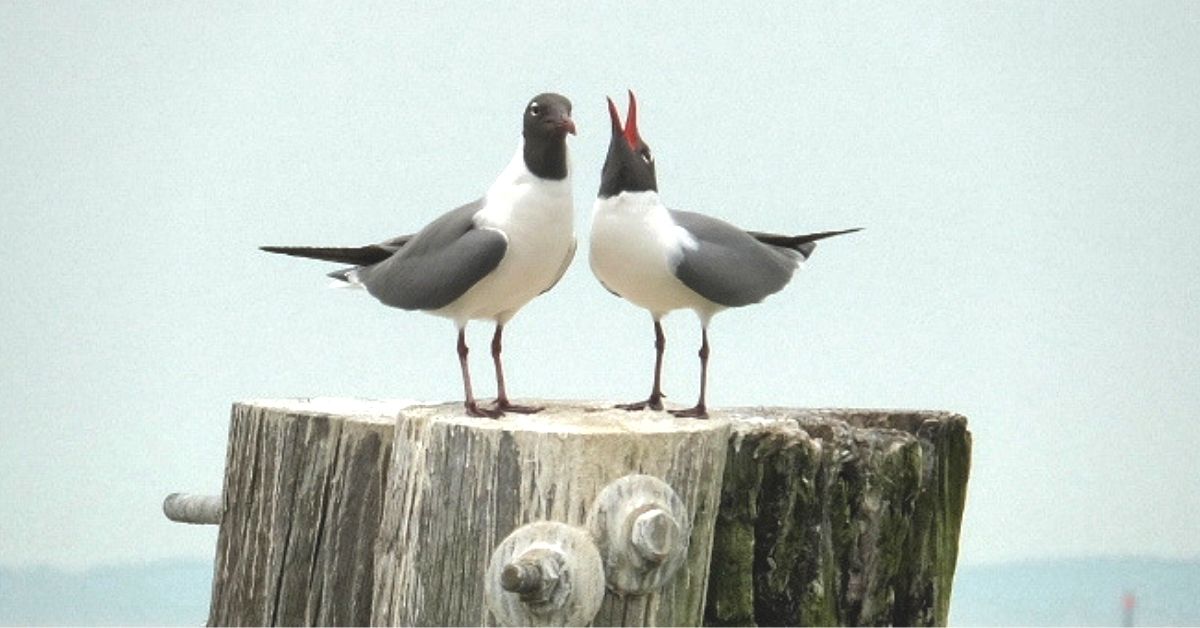
Laughing gulls at Fort Monroe. Photo by Page Thomas
By Jessica Ruthenberg, DWR Watchable Wildlife Biologist
Heading to Virginia’s coast this summer? While you relax on the shore, take a moment to check out the birds. They’re not all just seagulls; there is actually a wide variety of fascinating bird species that spend their lives at sea or along coastlines. This group of birds is known broadly as seabirds. Seabirds include gulls, terns, pelicans, cormorants, and numerous other birds that are well adapted to marine life.
Virginia’s Largest Seabird Breeding Colony
Thirteen seabird species breed in Virginia with the largest single breeding colony being located in Hampton at the newly created habitat complex of Fort Wool and three adjacent barges. The Fort Wool complex is an incredibly important conservation area for Virginia’s seabirds. It is the Commonwealth’s seabird epicenter of sorts with eight species of seabird breeding there, five of which are listed as Species of Greatest Conservation Need in the Virginia Wildlife Action Plan. These include royal tern, common tern, the state-threatened gull-billed tern, laughing gull, and black skimmer.
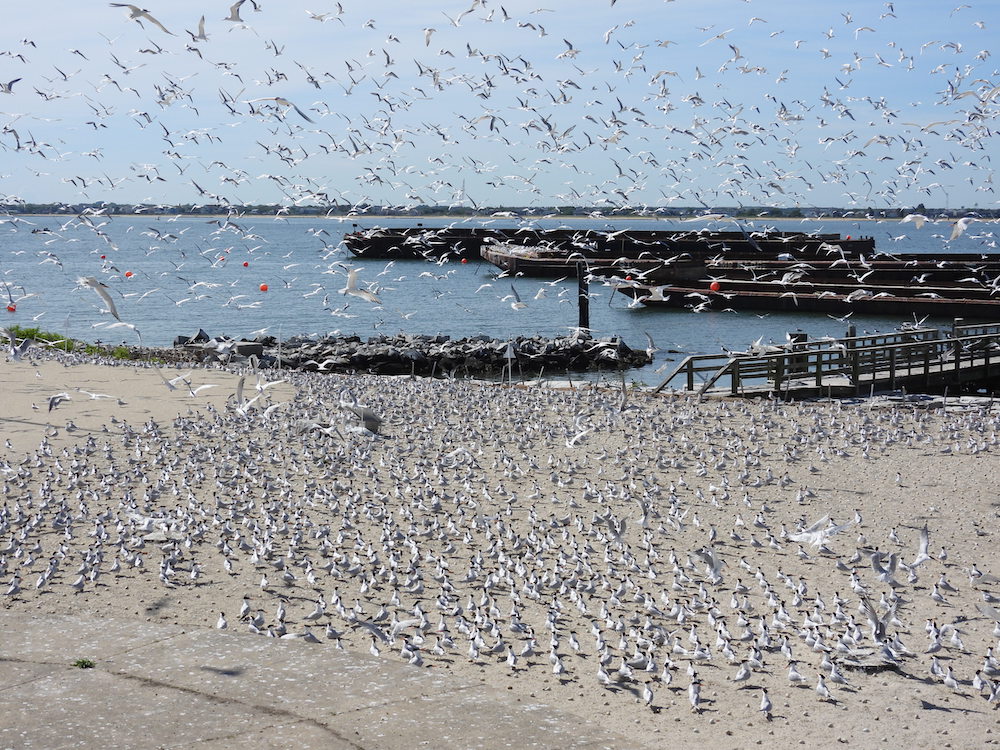
The seabird colony at the Fort Wool complex. Photo by Meagan Thomas/DWR
It is a particularly vital habitat for royal terns and sandwich terns, supporting 80% and 100% of Virginia’s breeding populations, respectively. Remarkably, this same group of birds had previously nested on an artificial island that’s part of the Hampton Roads Bridge-Tunnel, but relocated to the Fort Wool complex in 2020 following the governor’s mandate to provide temporary nesting habitat for seabirds displaced by the bridge-tunnel’s expansion project. (Learn all about this incredible conservation story.)
A Habitat that Extends Far Beyond Fort Wool
All of these seabird species are fish eaters that depend on the healthy waters of Virginia’s larger coastal landscape to find food to eat and feed their young. Some also eat insects, crustaceans, or other aquatic invertebrates. The birds travel around the surrounding waters of Fort Wool on surprisingly distant foraging forays to find their prey, including west up the James River, north up the Chesapeake Bay, and southward along the Atlantic coastline.
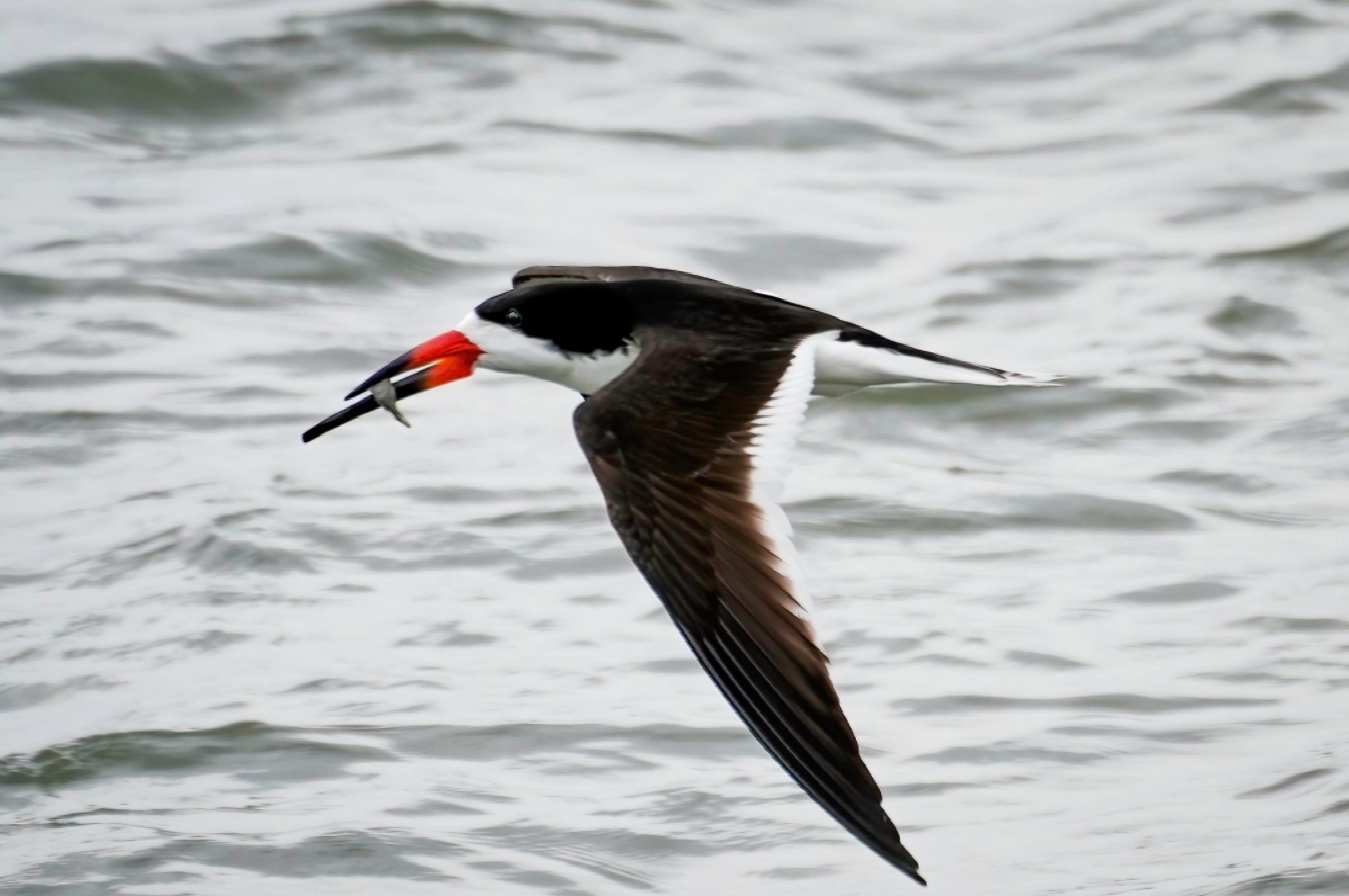
Black skimmer carrying a fish at Fort Monroe. Photo by Catherine Johnson Photographic Artist
Studies have documented royal terns on foraging flights of over 12 to 18.6 miles from their colonies and common terns as far out as 12.4 miles from their colony. Although they don’t venture quite as far, even gull-billed terns are estimated to forage more than 6 miles from their breeding colony. All of these tern species may be seen feeding at bays, beaches, inlets, tidal creeks, marshes, and tidal pools. Black skimmers are a bit more of a homebody, foraging almost exclusively inshore not much more than 3 miles out from their nesting colony.
Get to Know Your Seabirds
An easy way to discern whether a seabird is a gull, a tern, or another species is to observe them feeding. Terns are often seen flying with their heads pointed down and they dramatically plunge-dive from the air to catch fish or crustaceans below the water’s surface.
Gulls do not plunge-dive, but instead feed in varied ways. They may tumble down from the air to catch food close to the water’s surface, or while floating they may dip their head under to catch food. They also scavenge on land for nearly any food that is easy to grab and eat.
A unique feeder, black skimmers get their name from their foraging style of flying low over the water with their mouth agape, “skimming” their lower bill through the water’s surface until they feel a fish.
Here are some more tips on how to identify and further distinguish the eight seabird species breeding at the Fort Wool complex. (Note the ID tips below focus on adult birds in their summer breeding plumage. Most of these species have different coloration and patterns in the non-breeding season and as juveniles.)
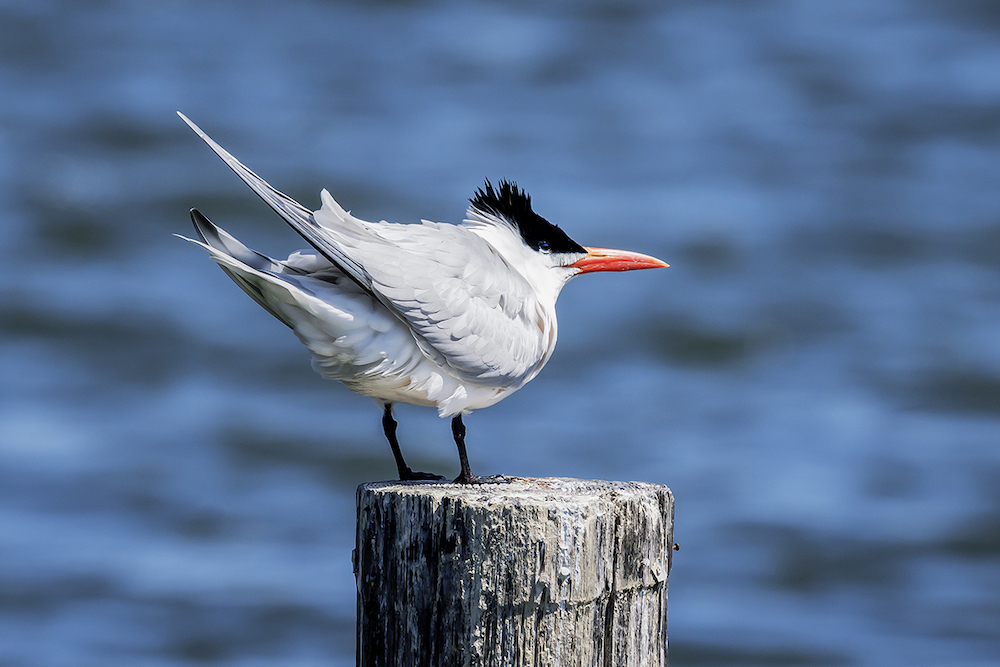
Royal tern at Phoebus Waterfront Park. Photo by Catherine Johnson Photographic Artist
Royal Terns are about the size of a crow with long, pointed wings and a long, deeply forked tail. They have a shaggy black cap on their head and black legs. Their bill is large, bright orange, and dagger-like.
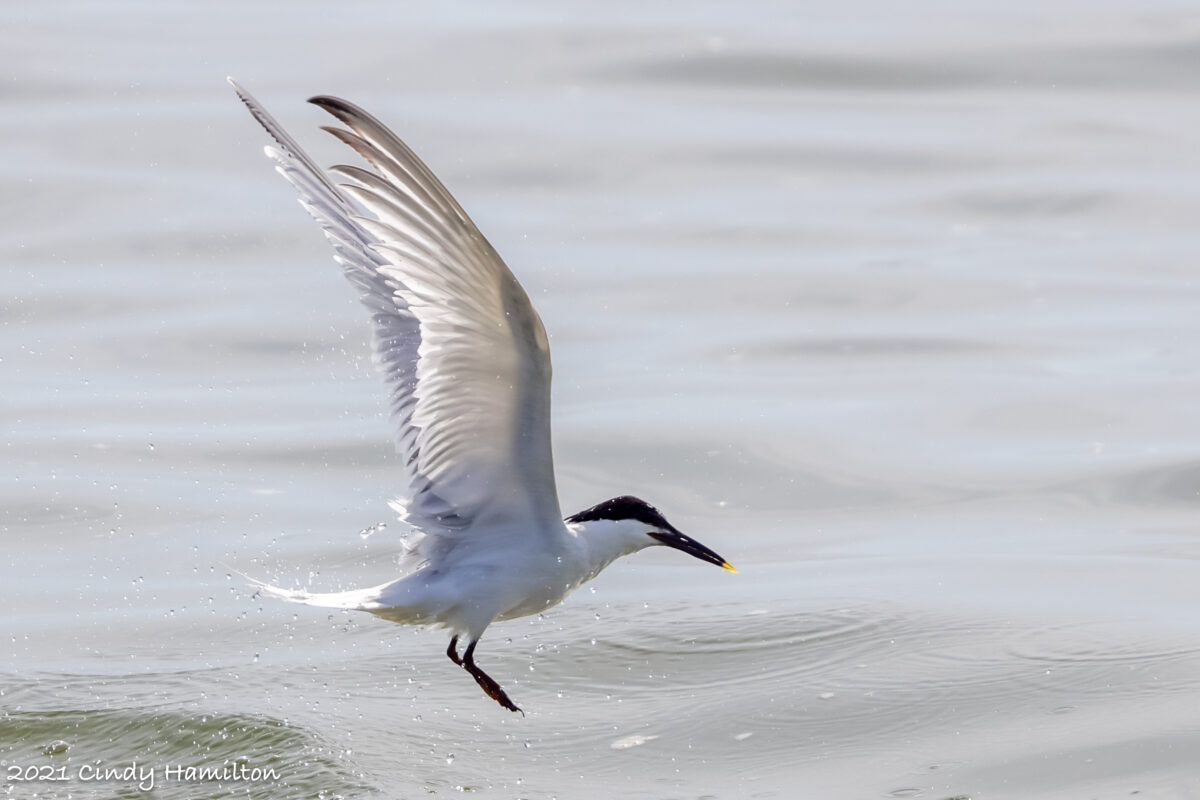
Sandwich Tern at Grandview Nature Preserve. Photo by Cindy Hamilton
Like royal terns, but a little smaller, Sandwich Terns also have a black cap on their head with a shaggy crest. What really distinguishes them from the royal is their bill, which is long and black with a pale tip.
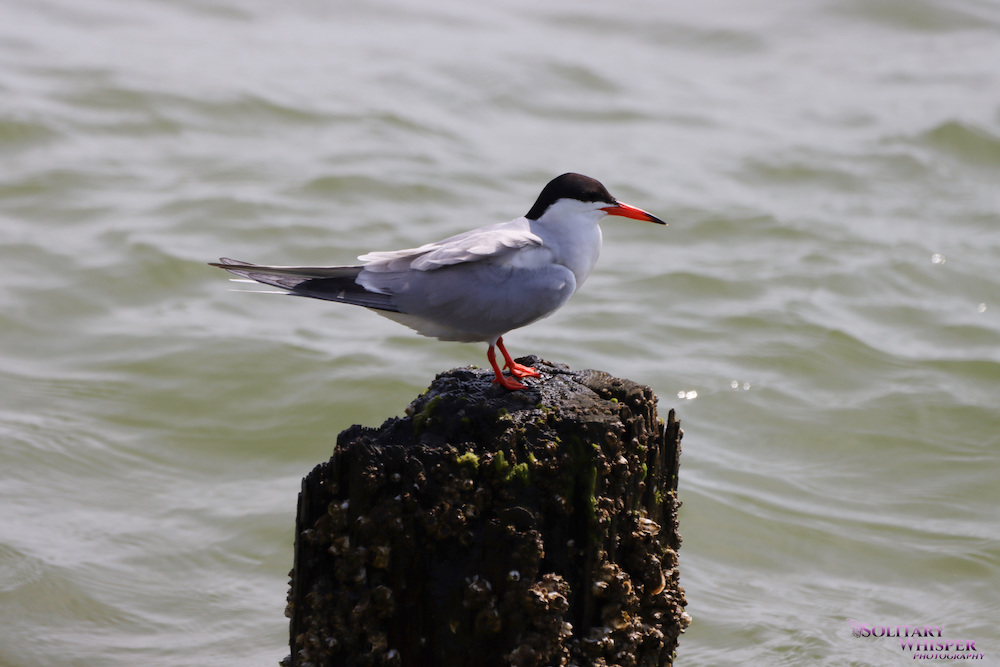
Common tern at Fort Monroe. Photo by Hope Grasser/Solitary Whisper Photography
Much smaller than royal and sandwich terns, Common Terns are between the size of a robin and a crow. They have a deeply forked tail; a black cap on their head; a long, slender reddish-orange (and sometimes black-tipped) bill; and reddish-orange legs.
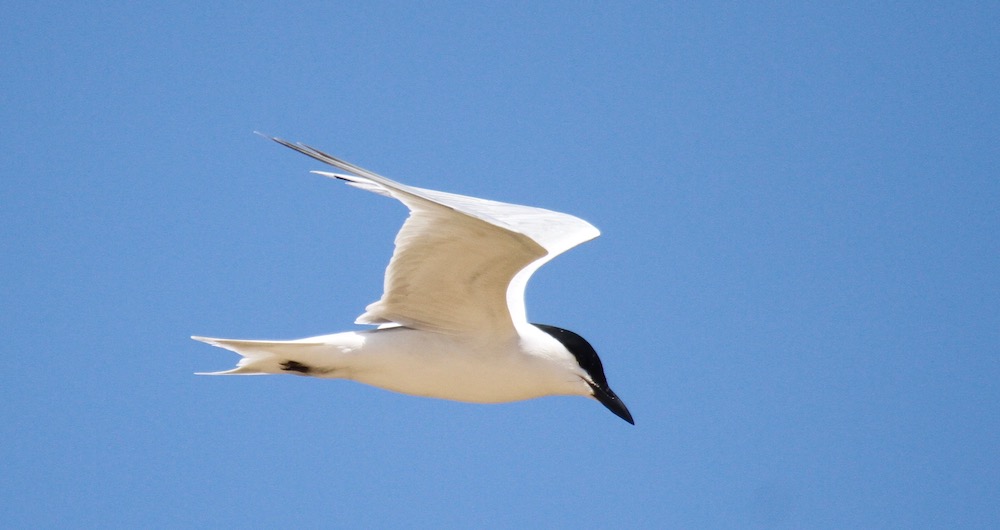
Gull-billed tern looking toward the water at Ocean View Beach Park. Photo by Jeff Byrd
The state threatened Gull-billed Tern is less common to see than other terns. They are similar in size to the common tern and have a black cap on their head, but their body is stocky with a short, notched tail. They have a thick black bill and black legs.
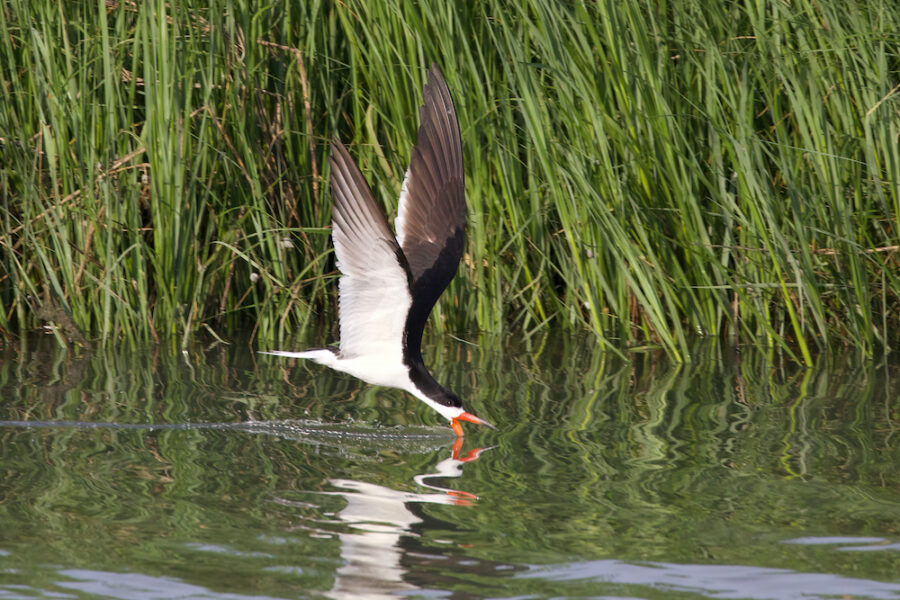
Black skimmer skimming for food at Fort Monroe. Photo by Cindy Walker
Black on top and white underneath, the striking Black Skimmer looks like it is wearing a tuxedo. They are about the size of a crow and have a disproportionately large, long orange and black bill. Their legs are orange. Your best bet to spot them is primarily at dawn and dusk, when they are most actively foraging.

Laughing gull at Phoebus Waterfront Park. Photo by Caroline Prevost
Laughing Gulls are medium-sized gulls (about the size of a crow) and sport a dramatic black-hooded head with small white markings around their eyes and a red bill. Their back is grey.
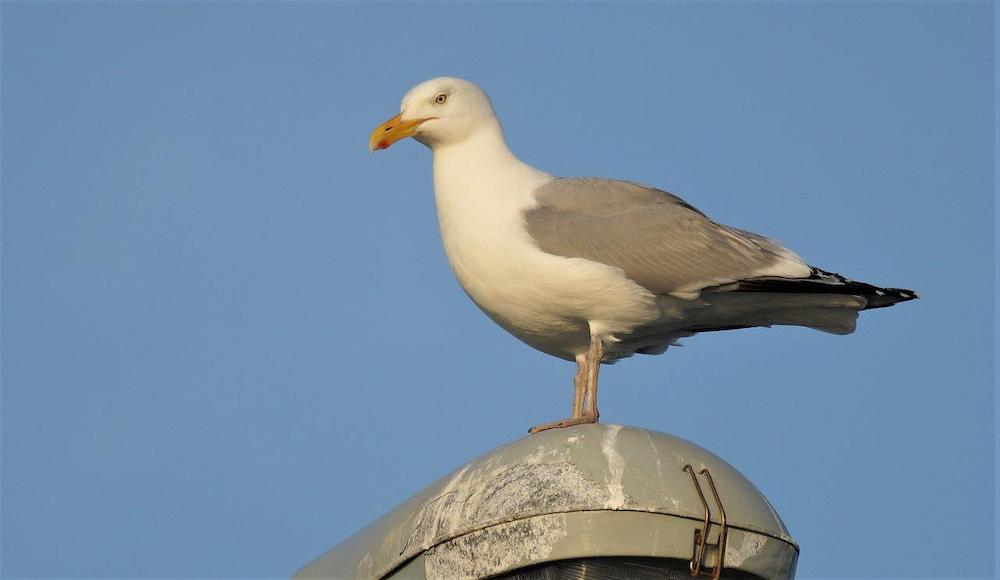
Herring Gull at Kiptopeke State Park. Photo by Steve Coari
Herring Gulls are one of our most common gulls in Virginia. They are larger than a Laughing Gull and have a pale grey back and wings. Their slim yellow bill has a red spot near the tip. Their legs are pale.
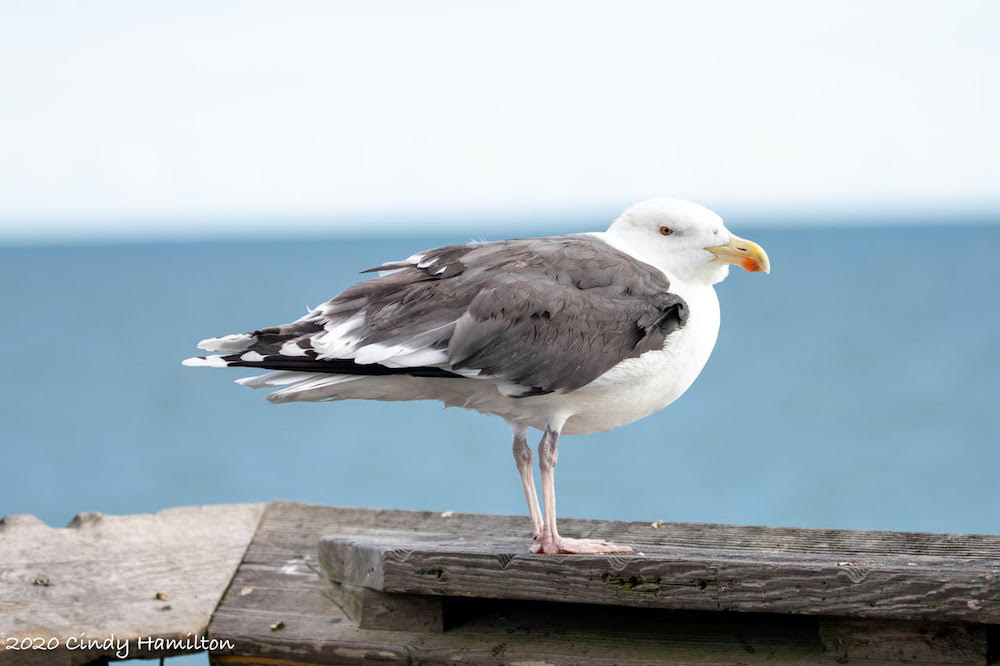
Great black-backed gull seen at Little Island Park. Photo by Cindy Hamilton
Great Black-backed Gulls are the largest gulls in the world, so they literally stand out from the crowd. They are stout bodied and as their name suggests, they have a black back. Like Herring Gulls, their bill is yellow with a red spot near the tip, but their bill is bulbous in appearance rather than slim. Their legs are pink.
Where to “Sea” these Birds This Summer
Anxious to get out and “sea” these birds in action? Your best bet is to catch a glimpse of them while they are out foraging. The Fort Wool complex itself and the surrounding waters are off limits to visit in order to protect the nesting birds, but there are many accessible areas that provide good views of them while foraging. Fort Wool is really just their home base, so you may observe them along several areas of Virginia’s coastal waters.
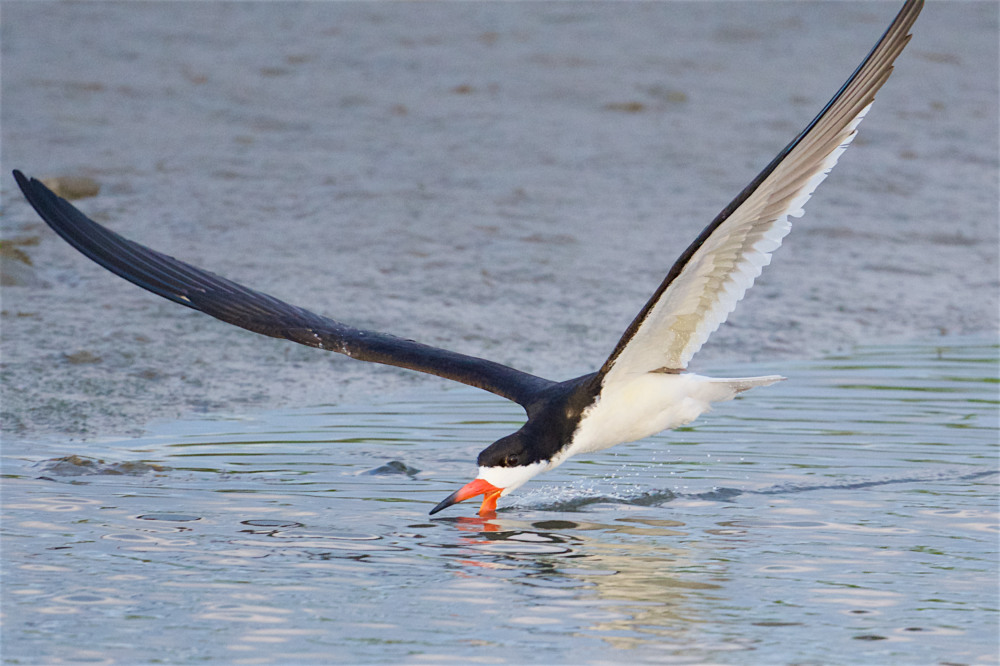
Black skimmer foraging at Pleasure House Point Natural Area. Photo by Hugh Davenhill
Here is a list of the top spots to see them, most of which are designated sites on the Virginia Bird & Wildlife Trail. To get the best look at the birds, bring binoculars or a spotting scope, if you have one. For all of the beaches, go birding early to beat the crowds or just try your luck while you relax on the shore.
Top Spots to See the Royal Terns and Other Seabird Species of the Fort Wool Complex
Hampton and Newport News Area – Closest to the breeding colony, this area is where you are most likely to see the greatest number of Fort Wool’s breeding species
- Fort Monroe – The Fort Monroe Seawall, a paved public walkway all along the Chesapeake Bay waterfront, provides the closest public access near the Fort Wool seabird colony. It provides perhaps the best opportunity for viewing the colony’s residents as they forage the waters along the Seawall. Please note that although Fort Wool may be viewed from the Seawall, the nesting colony itself is, unfortunately, not visible as the birds nest on the opposite side of Fort Wool from Fort Monroe.
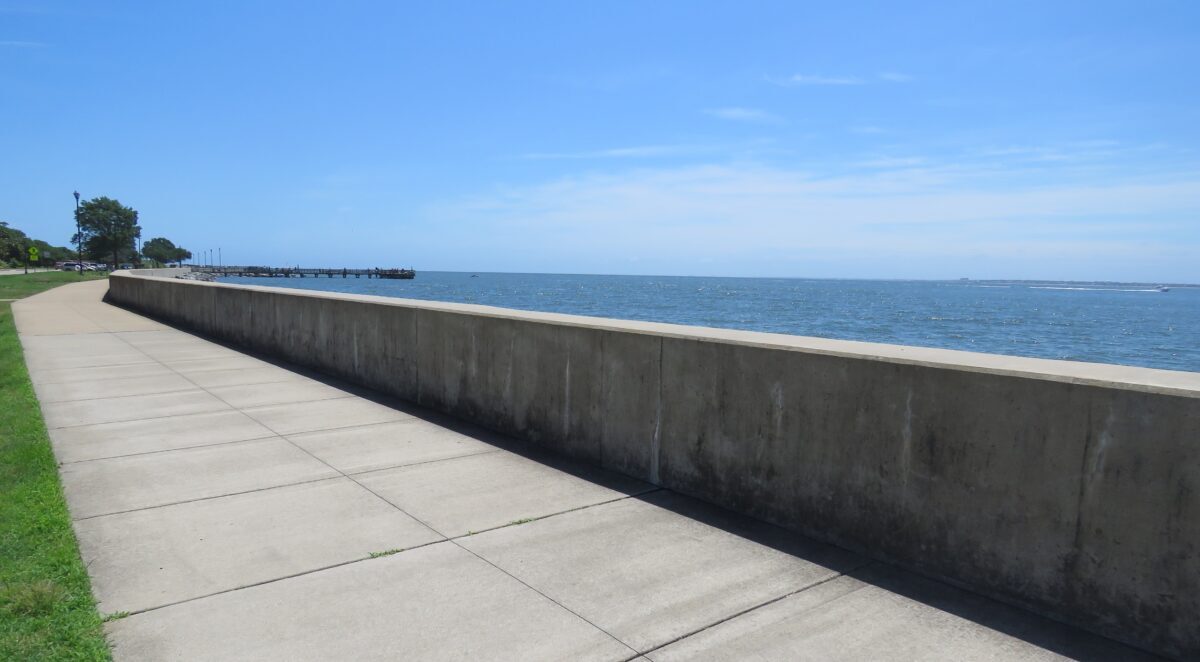
Fort Monroe Seawall with one of its two piers in the distance. Photo by Jessica Ruthenberg/ DWR
- Phoebus Pier/Phoebus Waterfront Park – A public pier off East Mellon Street makes for an easy stop on your way into Fort Monroe.
- Grandview Nature Preserve
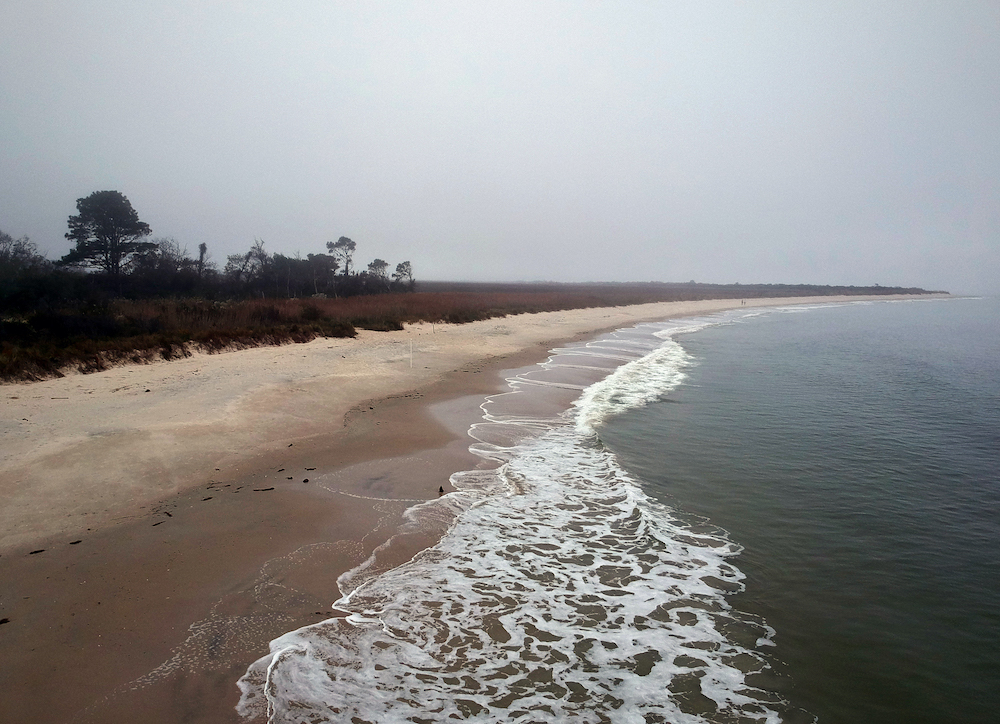
Grandview Nature Preserve. Photo by Aileen Devlin/Virginia Sea Grant
- Anderson Park
- Ragged Island Wildlife Management Area – In Smithfield, just a short drive over the James River Bridge from Newport News
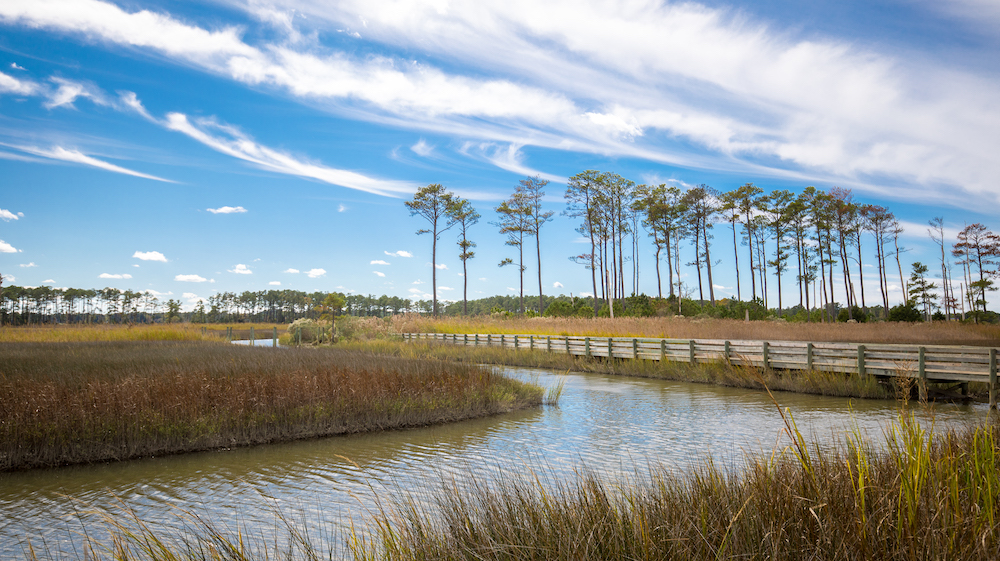
Ragged Island WMA. Photo by Meghan Marchetti/DWR
Norfolk and Virginia Beach Area
- Ocean View Beach Park
- Pleasure House Point Natural Area
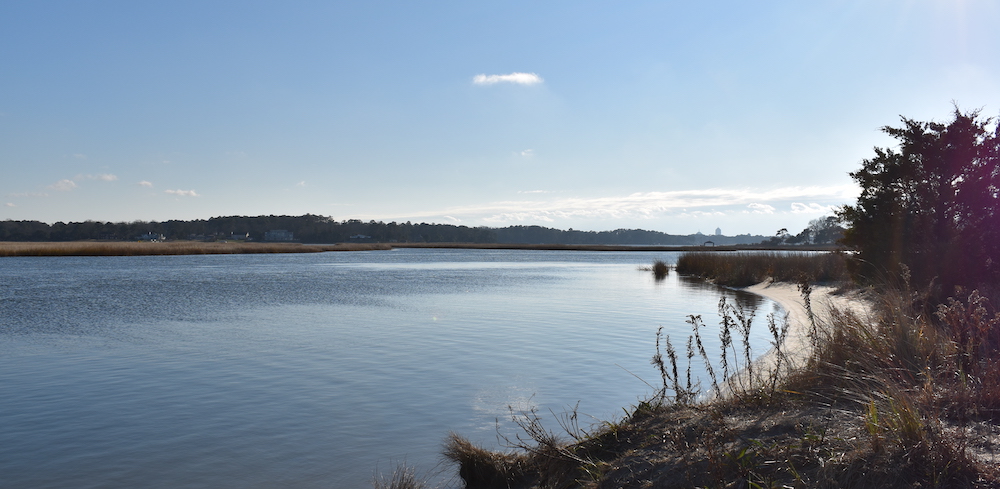
Pleasure House Point Natural Area. Photo by Michael Moore/Virginia Beach Parks and Recreation
- Little Island Park
- Back Bay National Wildlife Refuge
Eastern Shore
- Chesapeake Bay Bridge-Tunnel’s northern scenic overlook
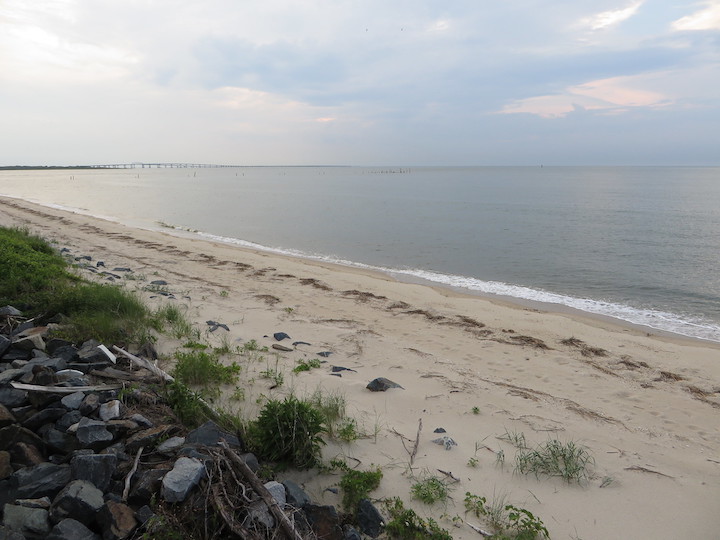
Chesapeake Bay Bridge-Tunnel Scenic Overlook. Photo by Ken Lund
- Kiptopeke State Park
- Cape Charles Beach and Harbor
Middle Peninsula
- Newpoint Comfort Natural Area Preserve
- Bethel Beach Natural Area Preserve
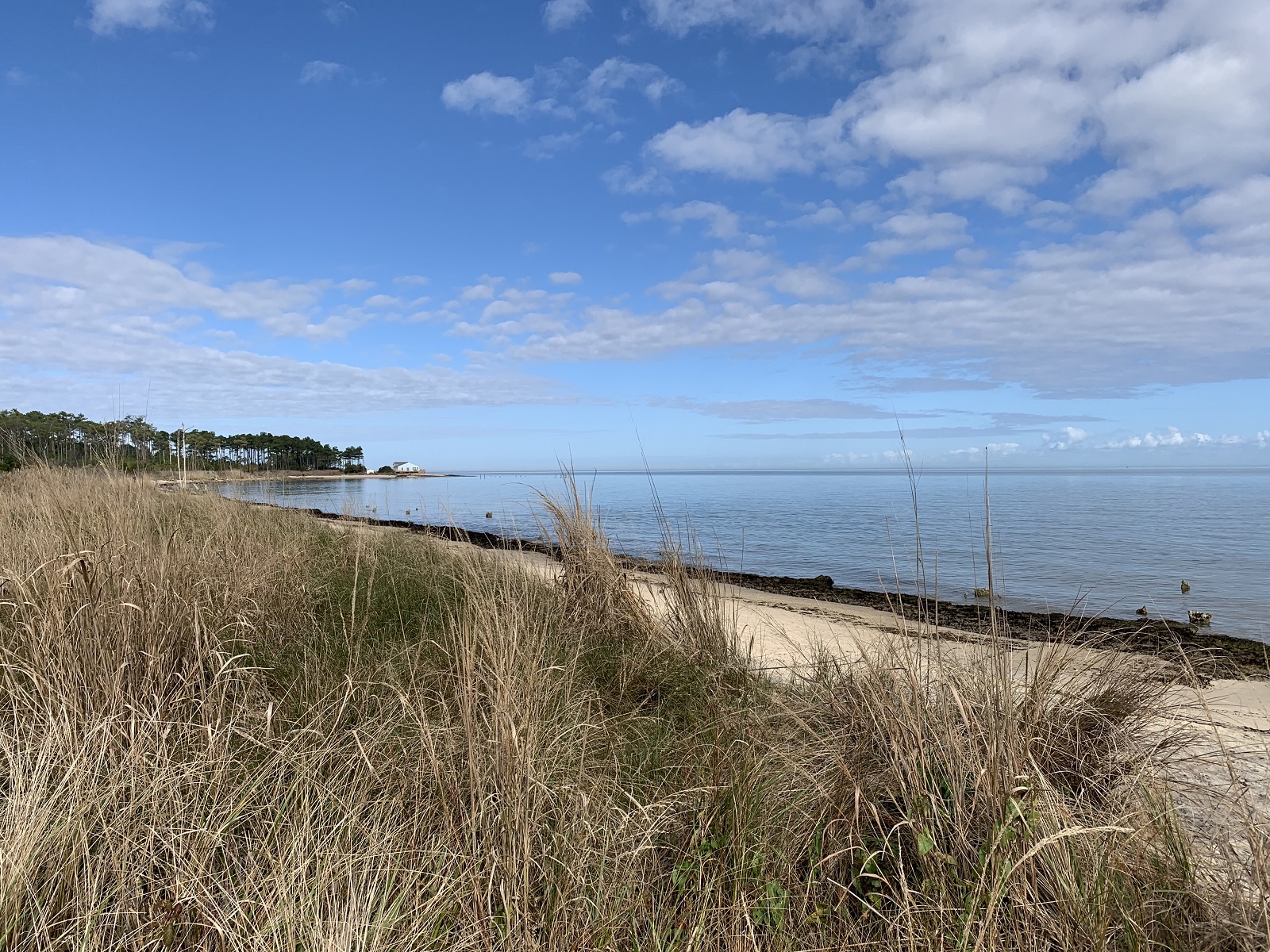
Bethel Beach Natural Area Preserve. Photo by Meagan Thomas/DWR
Northern Neck
Jamestown and Yorktown Area – A little further out and upriver from the Fort Wool complex, but you will still have an excellent chance of seeing its royal terns here as well as laughing gulls and other general seabird species.
- Gloucester Point Beach
- Historic Jamestowne, along the shoreline of Jamestown Island
- Jamestown-Scotland Ferry
- Hog Island Wildlife Management Area – In Surry, just a 30-minute drive from the Jamestown-Scotland Ferry
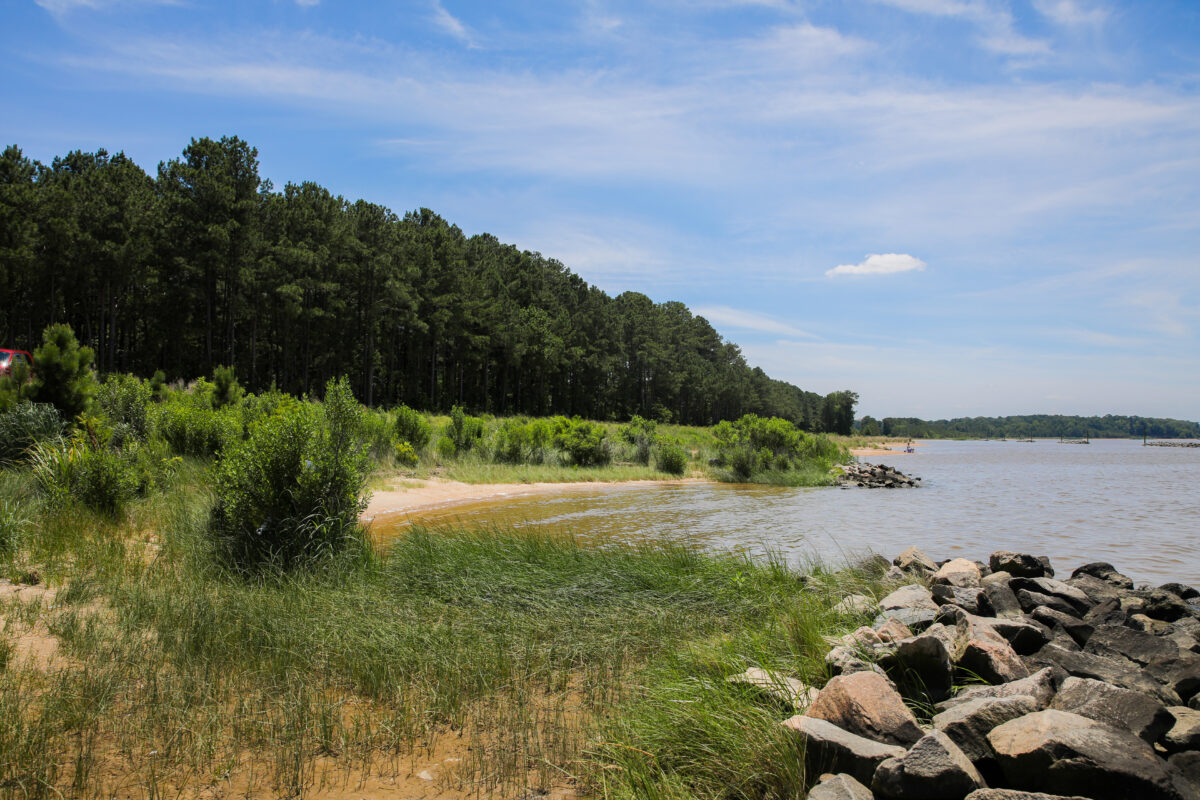
Hog Island Wildlife Management Area. Photo by Meghan Marchetti
While You’re At It, Help Us Keep Track of the Fort Wool Seabirds
If you happen to spot one of the Fort Wool species wearing a leg band, we want to know! You can submit your band sightings via a form on the DWR website. Photos showing the band are helpful when possible. Your observation will help us keep track of the breeding birds at the Fort Wool complex.


